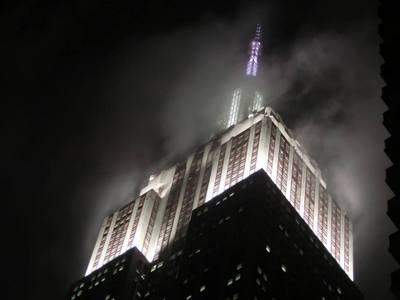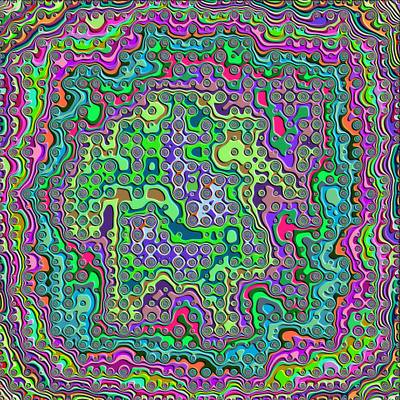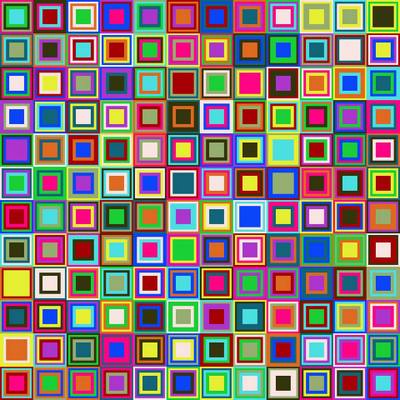|
KYSO Flash ™
Knock-Your-Socks-Off Art and Literature
|
|
|||
12 Artworksby David Victor Feldman, Featured ArtistI make art with mathematics the way painters do with brushes. Mathematics provides mental maps to “spaces” we can’t necessarily see with our eyes or move through with our bodies.
Copyright © by David Victor Feldman. All rights reserved.
Copyright © by David Victor Feldman. All rights reserved.
Copyright © by David Victor Feldman. All rights reserved.
Copyright © by David Victor Feldman. All rights reserved.
The interesting place for me involves navigating the edge—neither dedicating
myself wholly to digital simulation of other media
Copyright © by David Victor Feldman. All rights reserved.
Copyright © by David Victor Feldman. All rights reserved.
Copyright © by David Victor Feldman. All rights reserved.
Copyright © by David Victor Feldman. All rights reserved.
Copyright © by David Victor Feldman. All rights reserved.
Copyright © by David Victor Feldman. All rights reserved.
Copyright © by David Victor Feldman. All rights reserved.
Copyright © by David Victor Feldman. All rights reserved. [All images are reproduced from online galleries with artist’s permission.] Notes from the Artist re [Mathematical Plant]Facebook Friend: Is this purely mathematical, or a re-imagining of a real plant? David Victor Feldman: Purely mathematical albeit stochastic. One of hundreds I made—I chose this one to post for its naturalistic balance between symmetry and skew. Second FB Friend: What does stochastic mean? So fascinating, the resemblance to flowers. Feldman: Stochastic means that the code relies on a source of random numbers. So instead of specifying one picture (deterministic), it specifies an infinite multiplicity. Unlike, say John Cage, I don’t use randomness for any ideological reason; I just find randomness a useful and indeed essential tool. When my code has a random component, I’ll run it a hundred or a thousand times with a view towards making my last step as artist [to pick] the “best” result. I actually like how this process forces me, as part of my process, to identify with any potential collector or connoisseur—forces me to shift gears from making to seeing. Often I let things sit for weeks in order to relax my attachments, in order to see better what came out that I didn’t put in. Alternatively, I might try to abstract my aesthetic judgement, build it into the next cycle of coding, making it so that many or all the pictures now automatically have that “best” feature that I found I valued. That forces me back to my intuition for some deeper aesthetic discrimination. (This description over simplifies, makes it all sound like I have more of a method than I really do.) I didn’t mean to write an artist statement, but let me add one more thing: as I engage in the seeing cycle of my work, I feel a tension about imposing received values (often derived from painting or drawing or other plastic arts [fiber!]) versus rejecting all that seems painterly, etc. in favor of whatever radical potential the digital medium really offers. The interesting place for me involves navigating the edge—neither dedicating myself wholly to digital simulation of other media nor to cutting off all connection to the past practices in the name of digital purity. —Posted to Facebook on 28 October 2011; republished here with artist’s permission Notes from the Artist re [Mathematical Forest]Facebook Friend: You did this in class? I wanna take your class! David Victor Feldman: Yes, my “Pathways Between Mathematics and the Arts.” Started from scratch—I had two hours—introduced the basic concepts of recursion, wrote some code to make a basic tree, explored variations that produce more realism and more characteristic diversity (so that the trees would not all look like they came from the same fictional “species”), then we played with loops and probability distributions to turn code for one tree into a forest. And somewhere along the way I introduced color and created the forest floor, but that was easy. —Posted to Facebook on 11 February 2011; republished here with artist’s permission David Victor FeldmanIssue 4, Fall 2015
is an Associate Professor of Mathematics at the University of New Hampshire. He codes his digital artworks directly in Postscript, which is a computer PDL (page-description language) capable of creating high-resolution vector graphics that can be scaled to any size. While the visual effects are very dramatic, the code is quite elegant and efficient. Only a very few lines of code can produce highly complex images, and changing one parameter in the code can alter an image dramatically. Feldman began composing music as a teenager and studied composition first with Leo Kraft, and then at college with Krysztof Penderecki, Martin Bresnick, Jonathan Kramer, and others. He wrote his first algorithmic composition, “Primetime,” for two marimbas, in 1975, and set about learning graphics programming in 1987 to avoid the tedium of copying out his algorithmic works by hand. The graphics programming exercises he set himself eventually developed into an artistic practice all its own. As a photographer, he shoots animals, insects (especially moths), flowers, and the natural world. To learn more about the artist and his work, please visit his website www.davidvictorfeldman.com (still under development but coming soon), find him on Facebook at Math Music, or check out the links in the section below. More on the Web: By, About, and Beyond⚡ Computer art in motion, Excavation, an “action painting” by Feldman set to his own music played on a digital instrument of his own design, on YouTube (7:37 video) ⚡ Lightbox Interpretations of Feldman’s art at Point.B Studio ⚡ Comprehensive gallery of Feldman’s Postscript Poetry series at Point.B Studio ⚡ Gallery of numerous abstract digital images by the artist ⚡ Feldman’s musical compositions at SoundCloud |
|
Site contains text, proprietary computer code, |
|
| ⚡ Many thanks for taking time to report broken links to: KYSOWebmaster [at] gmail [dot] com ⚡ | |
![[The Madding Crowd] by David Victor Feldman](http://www.kysoflash.com/Images/Feldman_Madding_Crowd.jpg)


![[Looping Color Eyes] by David Victor Feldman](http://www.kysoflash.com/Images/Feldman_Color_Eyes.jpg)
![[Mathematical Plant] by David Victor Feldman](http://www.kysoflash.com/Images/Feldman_Math_Plant.jpg)
![[Blossoms and Leaves] by David Victor Feldman](http://www.kysoflash.com/Images/Feldman_Blossoms.jpg)
![[Charcoal Ellipticals] by David Victor Feldman](http://www.kysoflash.com/Images/Feldman_Ellipticals.jpg)
![[Black Water], photo by David Victor Feldman](http://www.kysoflash.com/Images/Feldman_Black_Water.jpg)
![[Lamprey River, Christmas 2014] by David Victor Feldman](http://www.kysoflash.com/Images/Feldman_Lamprey_River.jpg)
![[Combined Abstract] by David Victor Feldman](http://www.kysoflash.com/Images/Feldman_Trio_Abstract.jpg)
![[Mathematical Forest] by David Victor Feldman](http://www.kysoflash.com/Images/Feldman_Math_Forest.jpg)
